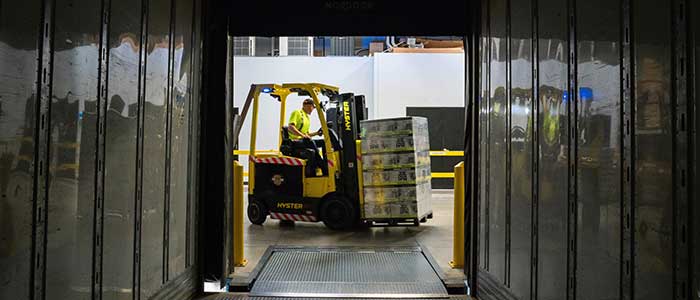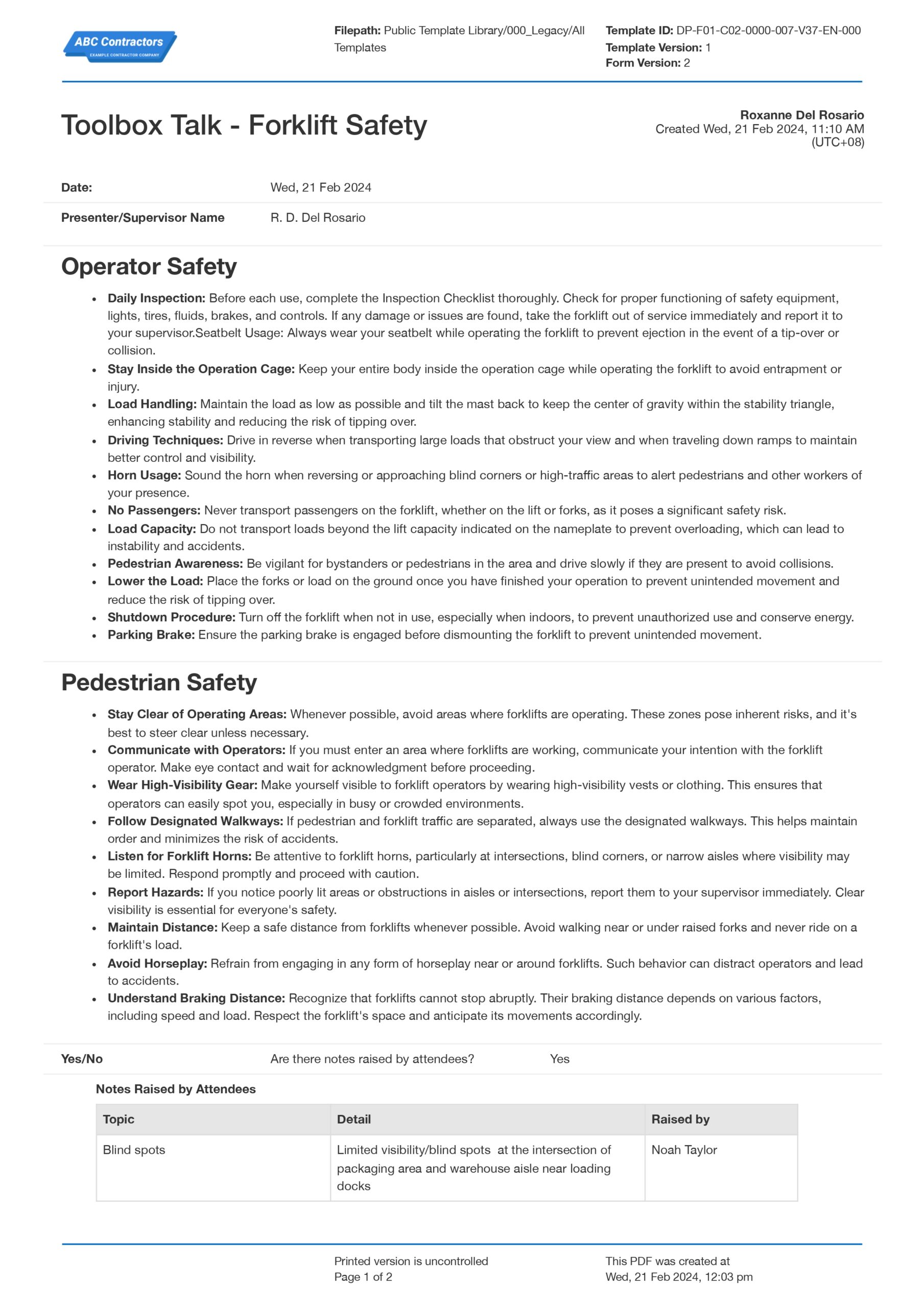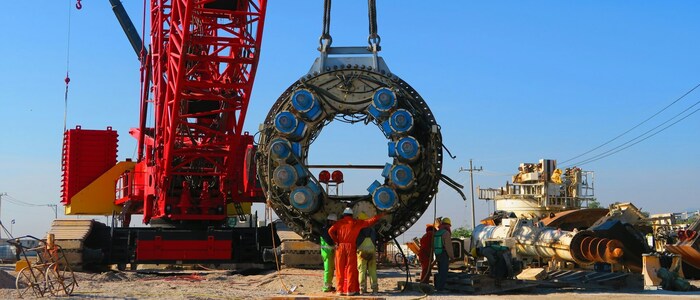Dashpivot Article – OSHA Forklift Safety
OSHA Forklift Safety
In this article, we cover the main OSHA forklift safety requirements, as well as provide a number of help tips and resources around how to improve forklift safety for the benefit of all.

Powered industrial trucks in the industry
The main purpose of powered industrial vehicles, often known as lift trucks or forklifts, is to transfer items across a variety of industries. Additionally, they may be used to lift, lower, or remove big items or many smaller items from pallets, boxes, crates, or other containers. These trucks have been used to provide efficiency in heavy lifting works. However, using these trucks comes with hazards.
Because of said hazards, the Occupational Safety and Health Administration provided regulations for industries to follow to provide a much safer approach in operating forklifts.
Industries of any kind that use these powered industrial trucks are required to follow the provided regulations for the benefit of maintaining a safe and healthy workplace and avoiding legal fees due to non-compliance.
Forklift Hazards
To fully understand why the Occupational Safety and Health Administration provided regulations on the usage of powered industrial vehicles, we must first understand the hazards when operating forklifts. While they are beneficial to any establishment, without the proper measures provided by the regulations made by OSHA, it would be inevitable for these hazards to cause harm to the company. This harm would not be limited to employees being injured but also extend to the financial losses and legal actions. Awareness of such hazards is a key component to being completely and safely competent when operating such machines. In this part of the article, we will impart to you the most common hazards associated with operating a forklift.
Overloading
There might be times when operators are pressured with deadlines and are rushed to finish stacking. Most of the time when this happens, operators tend to overlook the safety limit of the forklift capacity and overload it. However, this puts operators in a relatively dangerous position, especially when they make sharp turns on corners. Overloading is a dangerous move when operating forklifts. It leads to a number of potential accidents that could occur. A few to mention are tipping over, reduced brake efficiency, loss of steering control, forklift component failure, and etc. Manufacturers provide load limits to which everyone must follow to prevent such adversities mentioned earlier.
The operator’s vision is obstructed
This event usually also occurs the same as overloading. When pressured with deadlines, operators not only overload but also overstack crates to the point that they’re vision is obstructed by the pallets they are trying to move or transfer. Without the view of where they are driving, a lot of unwanted events, like pedestrian and object collisions, can happen. Doing this not only damages everything in its path but also damages the forklift itself. This can really lead to a huge financial loss for any establishment when this kind of wrong practice is permitted. Proper stacking must always be observed when using the forklift.
Mechanical failure
Mechanical failure may be brought on by a wide variety of variables, and it can result in a variety of potentially hazardous circumstances. The following are some of the potential outcomes that might occur as a result of this: loss of control, rollovers, falling loads, electrical and fire dangers, as well as injuries and deaths. The failure to do routine maintenance on the equipment, which is also a consequence of failing to check the equipment, is a common cause of this occurrence. An examination of the equipment is essential in order to determine whether or not it is still functioning in the appropriate circumstances. In order to prevent the undesirable occurrences that were described before, it is imperative that a comprehensive evaluation be performed prior to using a forklift.
Lack of training
Operating a forklift needs satisfactory knowledge and skill. It is a requirement for operators to have a certification or licence to operate before they can use the powered industrial truck. Lack of knowledge and skill can already place the operator in a dangerous position. This can lead to the following: misuse of controls that could lead to collision, improper usage can increase wear and tear of the equipment, legal issues with non-compliance to regulations, and poor emergency response due to operators lacking sufficient knowledge when dealing with an emergency. There must be strict implementation on who can operate a forklift to maintain workplace efficiency and safety in the workplace.
Hazardous work environment
There are times when the hazards are not found on the equipment being operated and the way the operator is operating. There are times when the environment itself is contributing to the hazard. It could be that the forklift is being operated in a place with a lot of uneven surfaces that could potentially tip off the balance of the load the forklift is carrying. Or, it could be that the forklift is operating in an open warehouse during wintertime, which makes the roads slippery. The environment plays a huge factor when operating a forklift. It must be made sure that the operator knows how to handle the machine when faced with this kind of circumstance.
Awareness of OSHA Forklift Safety
We have now discussed the common hazards when using forklifts. The only thing left to do now is to spread the knowledge for awareness, and the best avenue to do this is through toolbox talks.
Toolbox talks are short, informal meetings that target safety topics, like the ones being discussed in this article, to flourish and develop a safety mindset in the workplace. To have a successful toolbox talk, a toolbox talk form must be made.
This form contains a guide of the safety topic being discussed, a field for raised safety concerns about work, and a field for employee signature to verify that the employees who attended the meeting have understood the topic. This will also make sure that these meetings are documented and auditable. This will serve as evidence that your establishment is practicing safety in the workplace.
To understand what a toolbox talk form looks like, take a look at the example below.

Use this free Forklift Safety Toolbox Talk format for free
OSHA Forklift Safety
In this section of the article, we will be discussing the OSHA requirements in order to operate a forklift safely. We will be citing sections of the OSHA regulations that pertain to some major fields that OSHA has placed a major watch on.
Loading and Unloading
As per OSHA, approximately 25% of all forklift-related deaths are caused by forklift overturns, which are the primary cause of forklift-related fatalities. According to the case studies analysed by the National Institute for Occupational Safety and Health (NIOSH), deadly forklift mishaps may be caused by the forklift itself, the workplace environment, and the operator's activities. In OSHA 1910.176(a)-1910.176(g), the following measures are made to prevent such unwanted accidents:
1910.176(a): Where mechanical handling equipment is used, sufficient safe clearances shall be allowed for aisles, at loading docks, through doorways, and wherever turns or passage must be made. Aisles and passageways shall be kept clear and in good repair, with no obstruction across or in aisles that could create a hazard. Permanent aisles and passageways shall be appropriately marked.
- 1910.176(b): Storage of material shall not create a hazard. Bags, containers, bundles, etc., stored in tiers shall be stacked, blocked, interlocked, and limited in height so that they are stable and secure against sliding or collapse.
- 1910.176(c): Storage areas shall be kept free from accumulation of materials that constitute hazards from tripping, fire, explosion, or pest harborage. Vegetation control will be exercised when necessary.
- 1910.176(e): Clearance signs to warn of clearance limits shall be provided.
- 1910.176(f): Derail and/or bumper blocks shall be provided on spur railway tracks where a rolling car could contact other cars being worked on, enter a building, or work in a traffic area.
- 1910.176(g): Covers and/or guardrails shall be provided to protect personnel from the hazards of open pits, tanks, vats, ditches, etc.
Working with Hazardous Materials
As per OSHA Workers should have access to Material Safety Data Sheets (MSDSs), and all potentially exposed employees should receive adequate training. All employers who have hazardous chemicals in their workplaces are required to create and implement a written hazard communication programme. Other than that, OSHA requires the following:
- 1910.178(f)(1): The storage and handling of liquid fuels such as gasoline and diesel fuel shall be in accordance with NFPA Flammable and Combustible Liquids Code (NFPA No. 30-1969). The areas covered that are relevant to forklift safety are the following: classification of liquids, storage requirements, handling and transfer procedures, fire prevention, and emergency procedures.
- 1910.178(f)(2): The storage and handling of liquefied petroleum gas fuel shall be in accordance with NFPA Storage and Handling of Liquefied Petroleum Gases (NFPA No. 58-1969). The areas covered that are relevant to forklift safety are the following : safe storage of LPG cylinders, guidelines for filling, transporting, and securing LPG containers, fire and explosion prevention, and inspection and maintenance.
Vehicle Maintenance
As per OSHA, forklift operators often perform some of their own maintenance. Any car that has to be repaired, has a defect, or is dangerous should be taken out of service. The issue should be reported right away to a supervisor and noted on a log. To guarantee that forklifts will operate safely, operators should do pre-operation and operational inspections. Other than that, here are some requirements that OSHA provided when operating the vehicle.
- 1910.178(g)(1): Any powered industrial truck not in safe operating condition shall be removed from service. All repairs shall be made by appropriate personnel.
- 1910.178(g)(7): OSHA requires that all forklifts be examined at least daily before being placed in service. Forklifts used on a round-the-clock basis must be examined after each shift.
- 1910.178(g)(8): Any vehicle that emits hazardous sparks or flames from the exhaust system shall immediately be removed from service and not returned to service until the cause for the emission of such sparks and flames has been eliminated.
- 1910.178(g)(9): When the temperature of any part of any truck is found to be in excess of its normal operating temperature, thus creating a hazardous condition, the vehicle shall be removed from service and not returned to service until the cause for such overheating has been eliminated.
- 1910.178(g)(10): Keep the industrial truck in clean condition, free of lint, excess oil, and grease.
- 1910.178(p)(1): Never operate a vehicle that requires maintenance or is in any way unsafe.
- 1910.178(p)(4): No truck shall be operated with a leak in the fuel system until the leak has been corrected.
If OSHA forklift safety is top of mind for you, it's worth reading our forklift safety safety procedure article to ensure you are running safe and compliant procedures.

Safe Work Method Statement for Forklifts
Streamline your documentation and general approach to forklift safety using this template.

Forklift Job Hazard Analysis
Maintain safe forklift working practices with this Forklift Job Hazard Analysis template

Line of Fire Toolbox Talk
Keep your team safe from Line of Fire incidents by following this toolbox talk template.

